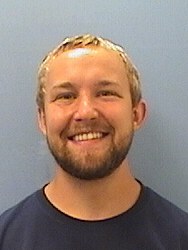About
Elliott completed his B.S. degree in Molecular and Structural Biochemistry from North Carolina State University in 2013. Following graduation, he accepted a 2-year NIH fellowship at Rocky Mountain Laboratories in Montana, where he worked under the supervision of Catharine Bosio to investigate how the pathogenic bacterium Francisella tularensis avoids detection by the immune system by reprogramming the host’s cellular metabolism. Elliott is currently a member of Dr. Patricia Maness’s lab, where he studies the role of semaphoring signaling on dendritic spine remodeling during brain development. In his free time, he enjoys hiking, biking, craft beer, and going to concerts.
Research
During development of the brain, traveling axons are forming and breaking temporary connections with recipient dendrites, until their final destination has been reached. The Maness lab is focused on understanding the role of guidance cues (L1CAMs, semaphorins, ephrins) in the formation and maturation of proper synapses during development. Specifically, Elliott is interested in how the aversive molecule Semaphorin 3F interacts with the L1CAM family member NrCAM on an immature dendritic spine and signals to the cytoskeleton for retraction – effectively breaking the connection and allowing the axon to continue migration. Defects in this plasticity process can lead to an over-accumulation of synaptic connections, which disrupts the overall E/I balance and has been linked to the manifestation of autism spectrum disorder.
Activities/Awards
T32 Neuroscience Training Grant (2017-Present)
NIH Intramural Research Training Award (2014-2016)
